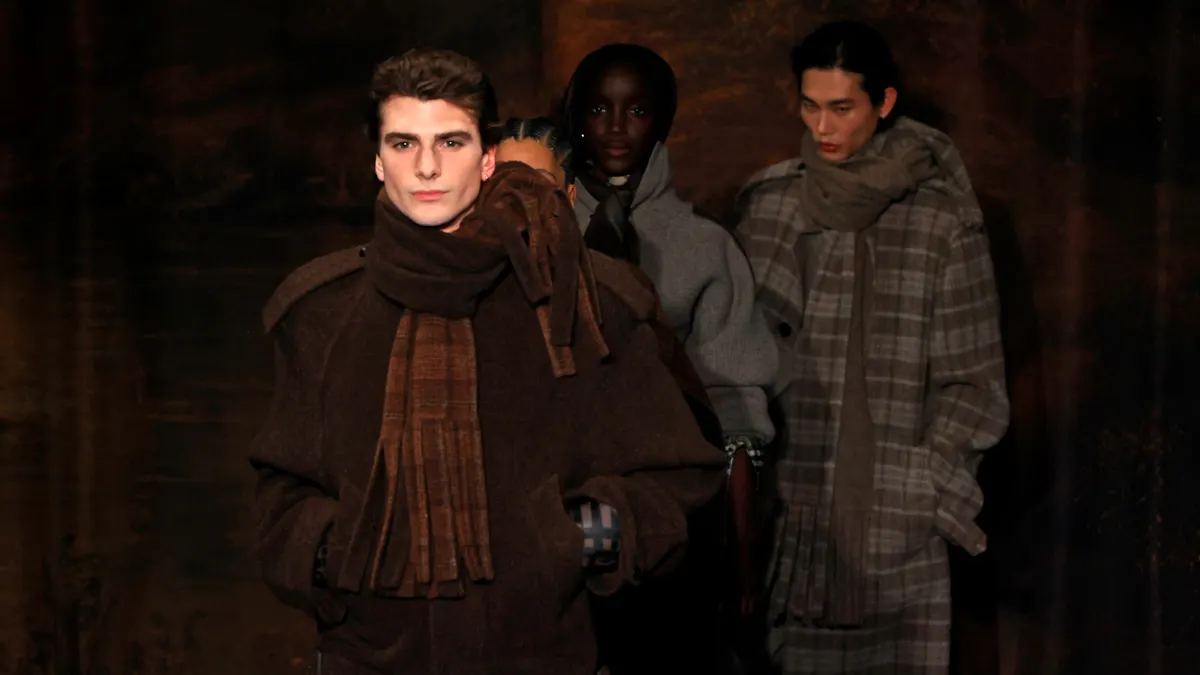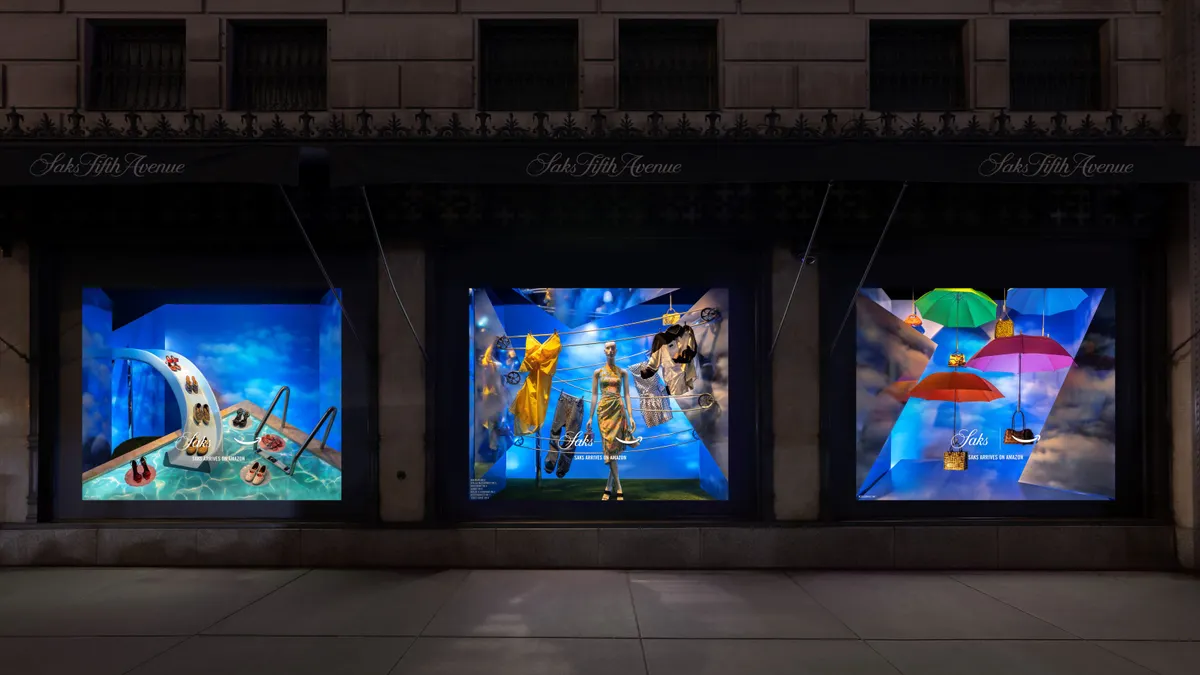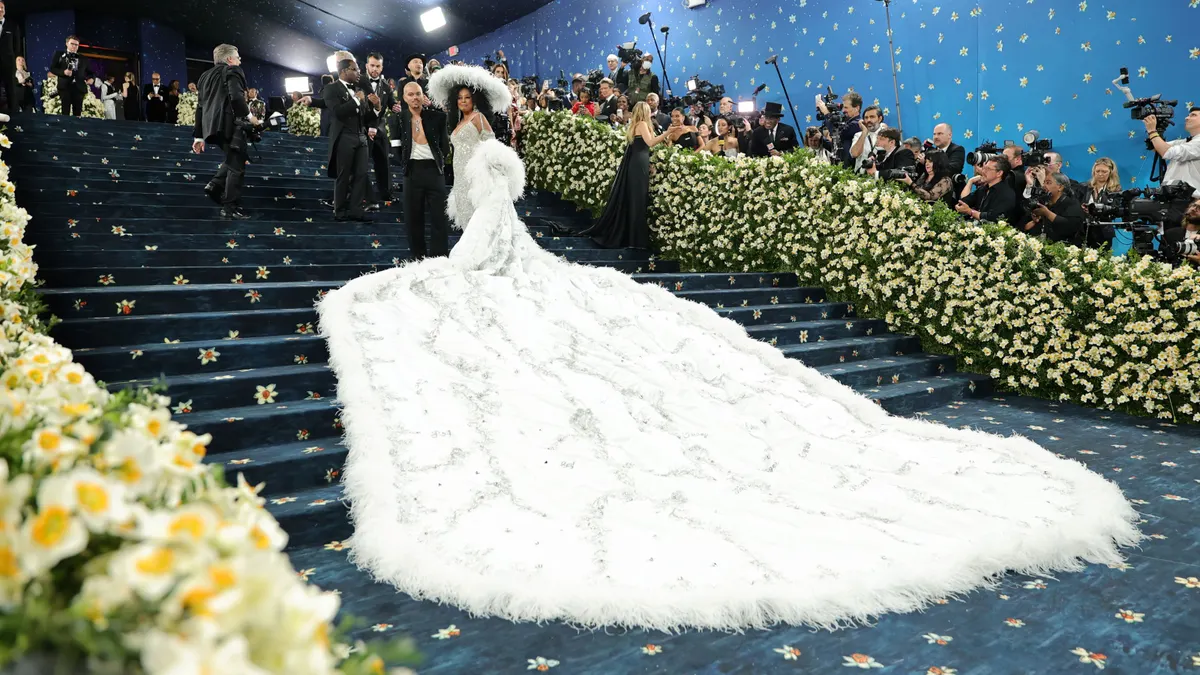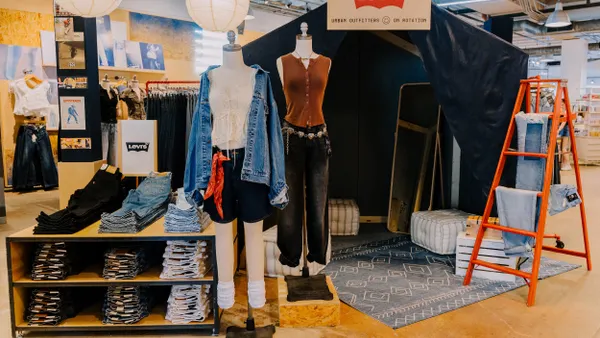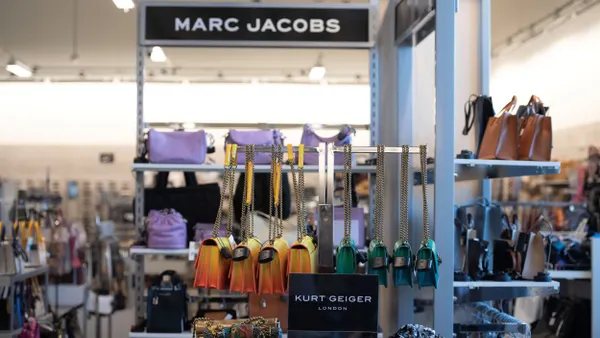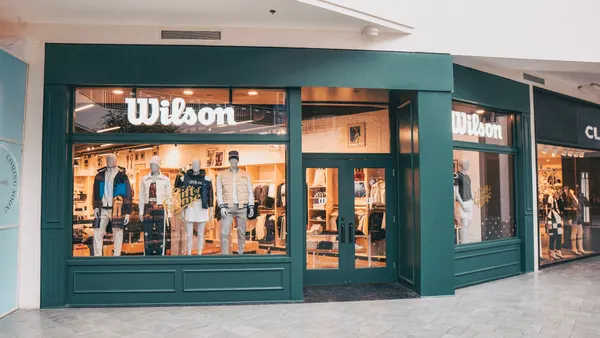Dive Brief:
- Burberry said it could cut up to 1,700 jobs after revenue fell 17% to 2.5 billion pounds, or about $3.3 billion, for the year ended March 29, according to preliminary results released Wednesday.
- The company announced the layoffs as part of an organizational change designed to improve profitability, which will also include a reduction in operating expenses and “increased efficiency of spend in procurement and real estate,” per the release.
- Adjusted operating profit plunged 94% to 26 million pounds for the year, while retail revenue dipped 13% and wholesale revenue dropped 37%.
Dive Insight:
Despite Burberry’s losses, its revenue beat analyst consensus which boosted shares by more than 17% following the news. The rally suggested the market was impressed by the early success of the company’s strategic Burberry Forward plan, first outlined in November.
Comparable store sales for the second half of the year declined 5% compared to a 20% decline in H1. Burberry also said it accelerated its pace to restore scarcity and address inventory overhang, resulting in a gross inventory decline of 9% by the end of March, ahead of guidance.
CEO Joshua Schulman, who joined Burberry in July, said in the release that despite a challenging first half of the year, the company has moved “at pace” to improve its performance.
“The continued resilience of our outerwear and scarf categories reaffirms my belief that we have the most opportunity where we have the most authenticity,” Schulman said. “While we are operating against a difficult macroeconomic backdrop and are still in the early stages of our turnaround, I am more optimistic than ever that Burberry’s best days are ahead and that we will deliver sustainable profitable growth over time.”
Burberry’s renewed focus on heritage staples, including its iconic trench and checked coats, has helped it move away from short-lived fashion trends and reinforced its brand identity, according to Yanmei Tang, an analyst at Third Bridge. She said this shift appeals to loyal and traditional customers and may also help cushion the company against luxury market downturns.
However, Tang cautioned that Burberry still faced hurdles.
“Our experts note that in categories like leather goods and footwear, Burberry struggles to compete with more established luxury players such as Louis Vuitton and Hermès,” Tang said in emailed comments. “Burberry’s signature trench coat, while an undisputed icon, poses a business challenge. As a lifetime product, it naturally limits the frequency of repeat purchases — unlike trend-driven items that bring customers back season after season.”
Creative director Daniel Lee could potentially be another wildcard for the company, said Tang.
“Industry watchers suggest that while Lee is known for his sharp luxury aesthetic, he has yet to fully align his creative vision with Burberry’s heritage DNA,” she said. “There’s ongoing speculation about the impact his potential departure could have — some believe it could cause short-term instability, though Burberry’s strength in traditional products may help absorb such shocks.”



